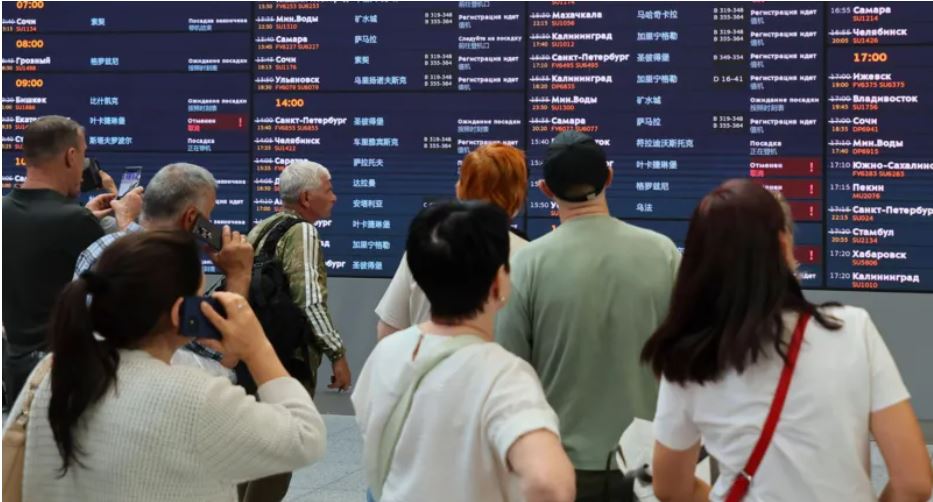A series of coordinated Ukrainian drone strikes on Russia forced temporary closures of four major airports in Moscow, causing significant travel disruptions. According to Russian authorities, more than 230 Ukrainian drones were intercepted over Russian territory between Saturday morning and Sunday, including 27 over the capital.
The targeted drone attacks led to the cancellation of at least 140 flights and the redirection of over 130 others, as confirmed by Russia’s aviation watchdog. The affected airports Sheremetyevo, Domodedovo, Vnukovo, and Zhukovsky serve millions of passengers annually and are crucial hubs for both domestic and international travel. Although all have since resumed normal operations, Russia’s Association of Tour Operators (Ator) revealed that Moscow airports were shut down 10 times within a 24-hour period due to the drone threat.
Kaluga International Airport, located southwest of Moscow, also experienced temporary closure after the Russian defence ministry claimed to have intercepted 45 drones in the region. Additional drones were reportedly downed over border areas near Ukraine, including the Rostov and Bryansk regions, as well as over the Black Sea. Despite the scale of the attacks, Russian officials reported no fatalities from the drone activity.
Meanwhile, Ukraine also came under aerial assault. Regional authorities confirmed that at least three civilians were killed overnight in Russian air strikes, continuing the deadly tit-for-tat pattern that has defined recent months of the conflict.
This is not the first instance of drone attacks severely impacting Russian air traffic. In May, over 500 Ukrainian drones launched in a single day stranded approximately 60,000 passengers at airports across Russia. The growing frequency and scale of drone warfare signal a new phase in the conflict, with aerial threats now capable of disrupting civilian infrastructure far from the front lines.
While both sides remain entrenched in a war of attrition, the use of drones has escalated, transforming them into strategic tools for surveillance, strikes, and disruption. As each side continues to adapt, the skies over Russia and Ukraine are becoming increasingly contested posing risks not only to military targets but also to civilians and vital transport systems.

